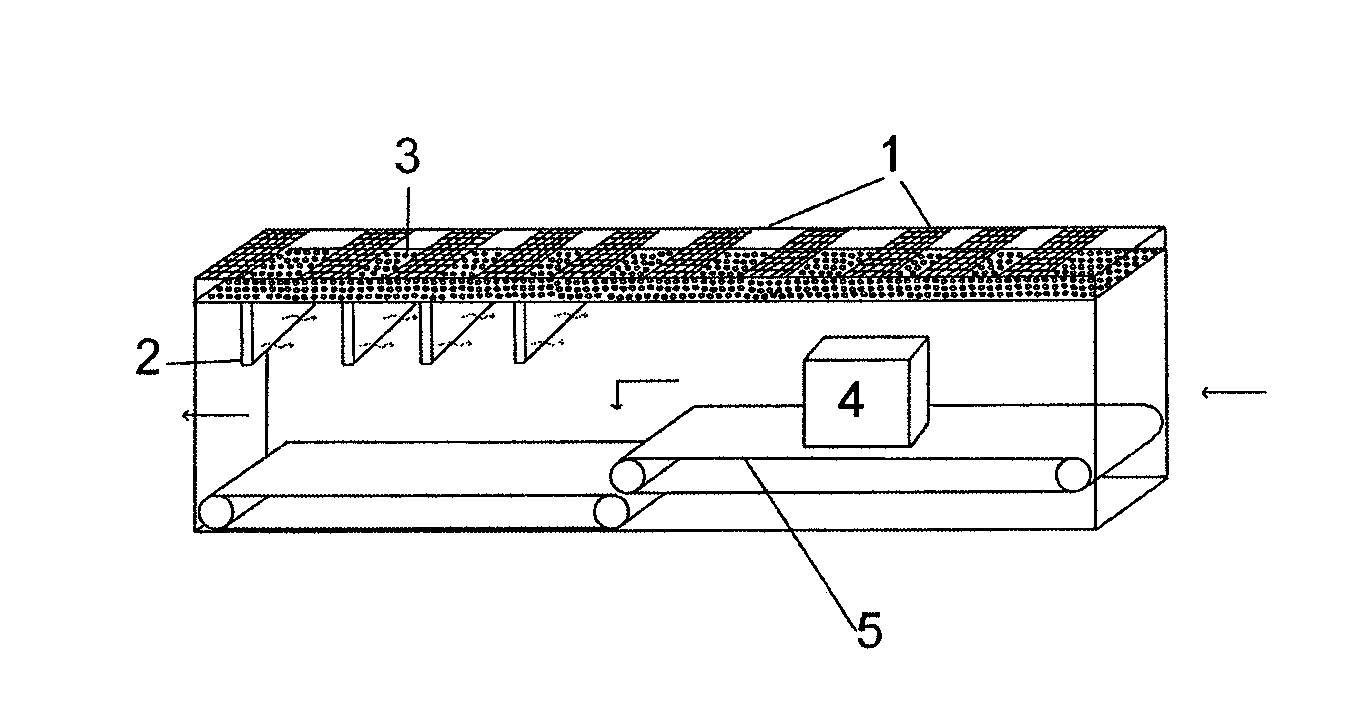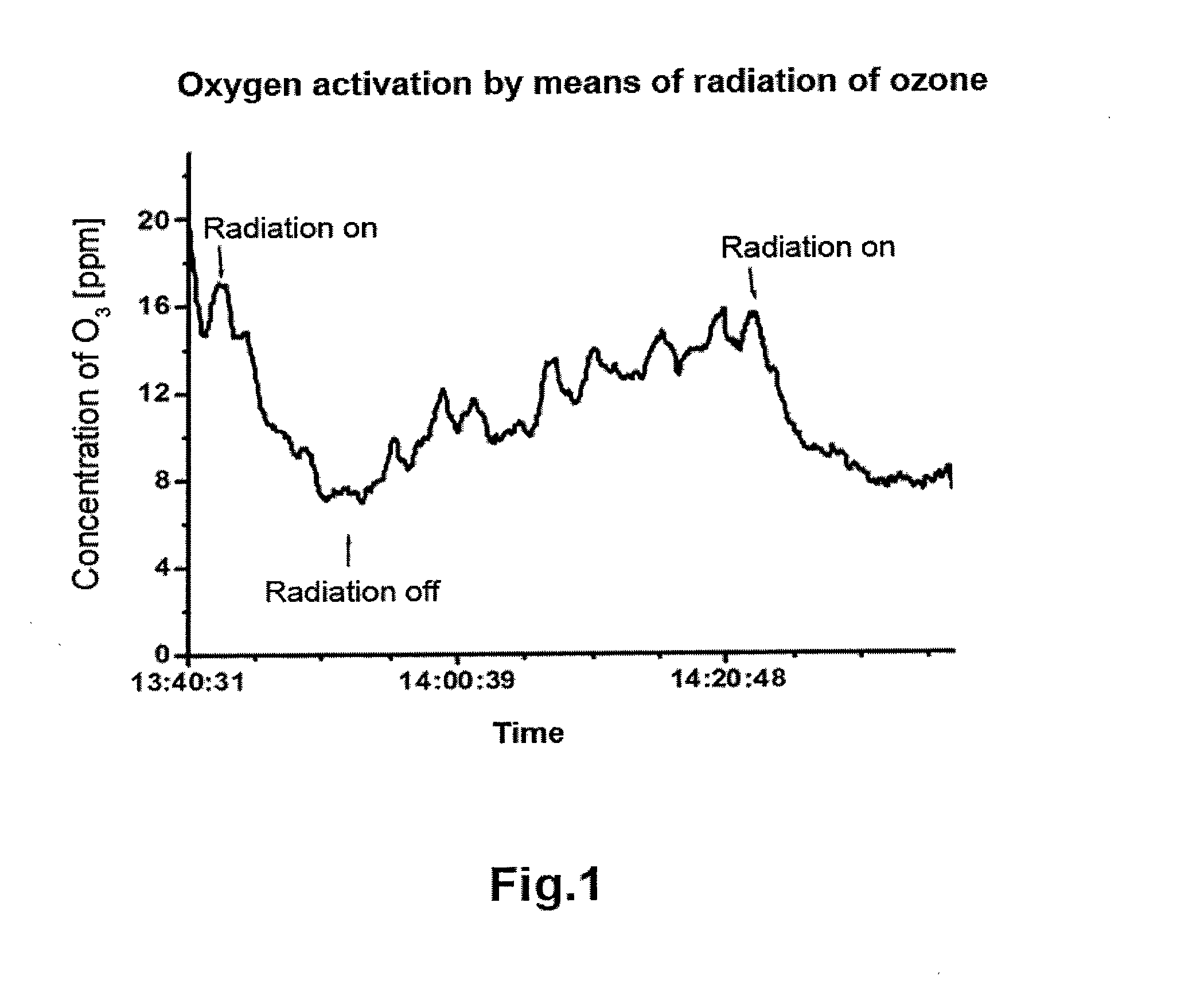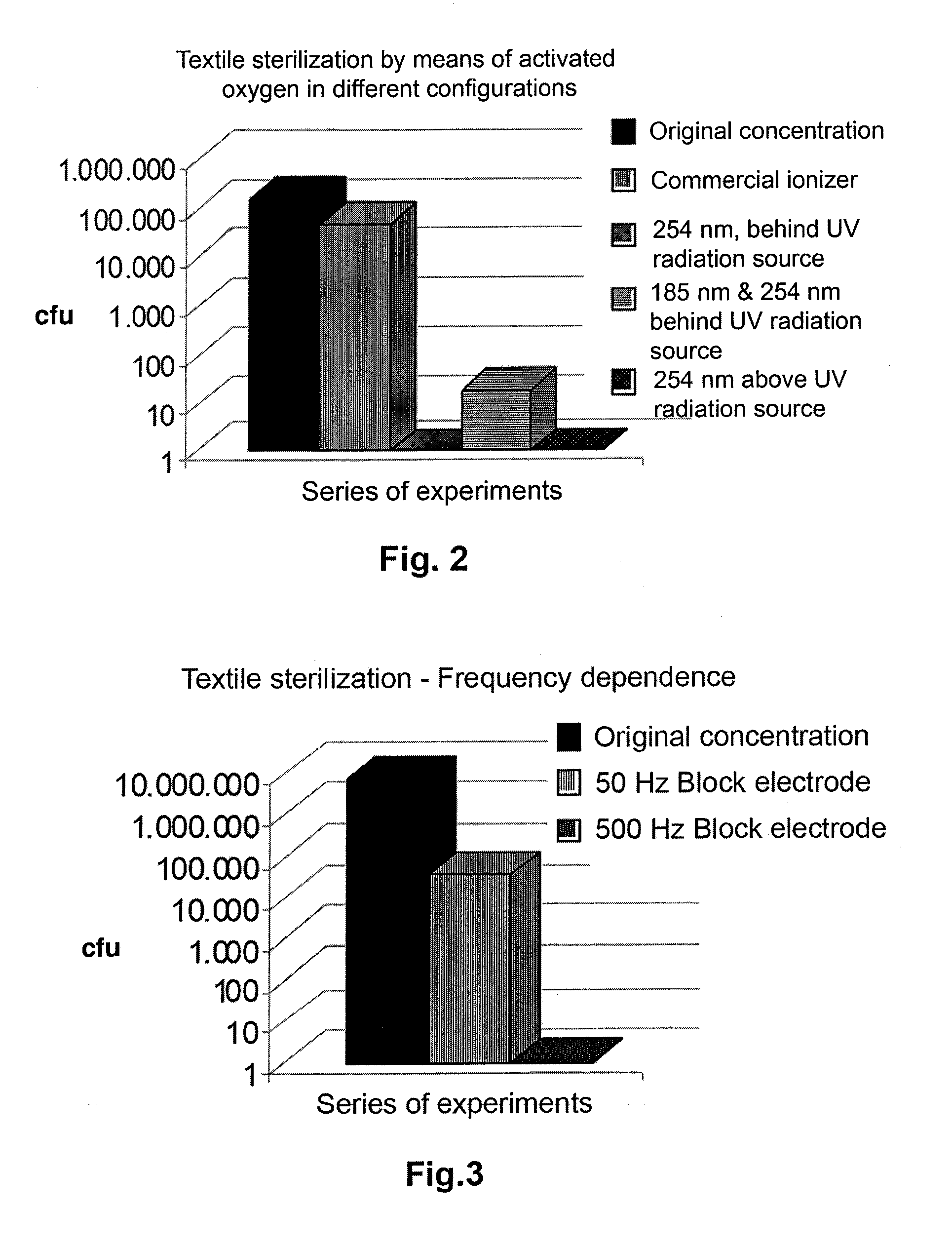Process for textile cleaning and disinfection by means of plasma and plasma lock
a technology applied in the field of textile cleaning and disinfection by means of plasma and plasma locks, can solve the problems of affecting the health and environment, and affecting the effectiveness of cleaning, so as to achieve low effort and support the effect of cleaning
- Summary
- Abstract
- Description
- Claims
- Application Information
AI Technical Summary
Benefits of technology
Problems solved by technology
Method used
Image
Examples
Embodiment Construction
[0062]Plasma generation / ozone generation and activation
[0063]Energy-efficient processes and arrangements for the plasma generation and of subsequent reactions (oxidation) will be demonstrated. In particular, a high reactivity will be achieved by parallel activating of ozone with the radiation through ultraviolet light such that atomic oxygen is resulting from it. This is particularly reactive.
[0064]FIG. 1 shows the rapid decrease of the ozone concentration shortly after the beginning of radiation by means of ultraviolet light. If the ultraviolet light is again switched off, then the ozone concentration is increasing again.
[0065]Disinfection
[0066]Two effective processes for the disinfection have been developed. With the textile structures being particularly complicated for the cleaning processes they have succeeded in a 5-log germ reduction of test textiles provided with bacteria E. coli, and a 7-log germ reduction with aerosols (from 107 microbes to “not detectable”).
[0067]Then, the...
PUM
| Property | Measurement | Unit |
|---|---|---|
| wavelength | aaaaa | aaaaa |
| voltages | aaaaa | aaaaa |
| wavelength | aaaaa | aaaaa |
Abstract
Description
Claims
Application Information
 Login to View More
Login to View More - R&D
- Intellectual Property
- Life Sciences
- Materials
- Tech Scout
- Unparalleled Data Quality
- Higher Quality Content
- 60% Fewer Hallucinations
Browse by: Latest US Patents, China's latest patents, Technical Efficacy Thesaurus, Application Domain, Technology Topic, Popular Technical Reports.
© 2025 PatSnap. All rights reserved.Legal|Privacy policy|Modern Slavery Act Transparency Statement|Sitemap|About US| Contact US: help@patsnap.com



